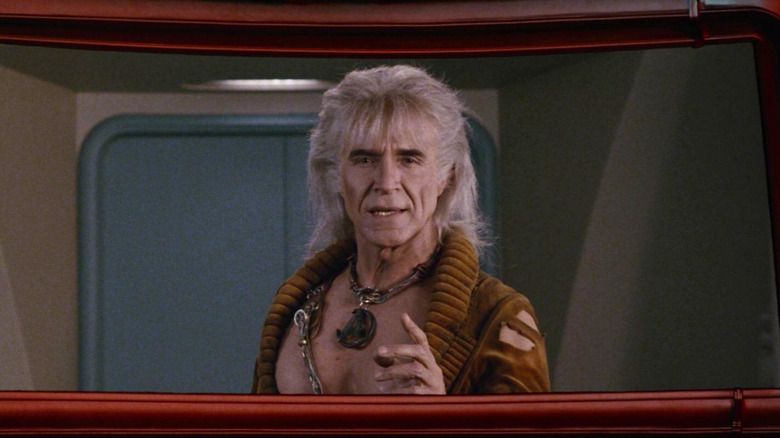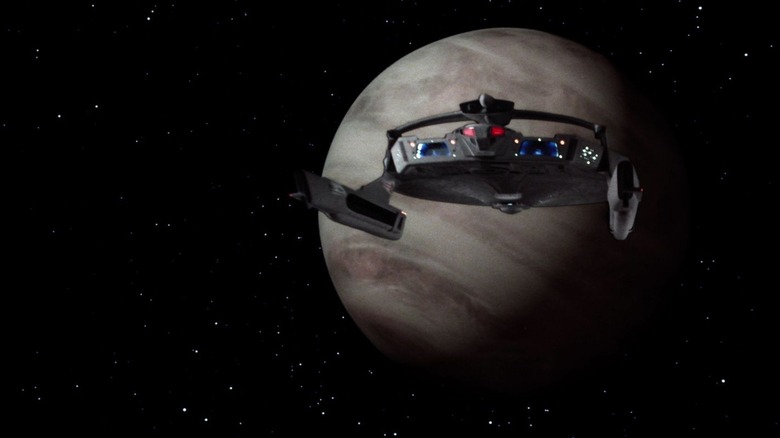Star Trek: The Wrath Of Khan's Director Was Under A Major Time Crunch To Create Sci-Fi Perfection
We may receive a commission on purchases made from links.
Director Nicholas Meyer has always come across as a touch arrogant when talking about his "Star Trek" movies. Meyer famously took the outline of the script to "Star Trek II: The Wrath of Khan" and banged out a final draft within 12 days, accepting no pay and no credit. He was brought in amidst some trouble behind-the-scenes, as "Star Trek" creator Gene Roddenberry had been locked out of the production after the box office underperformance of "Star Trek: The Motion Picture." Meyer not only saved "Star Trek II," but he also made a film that is, even today, considered one of the best "Star Trek" movies.
Meyer returned to the franchise in 1986 to co-write "Star Trek IV: The Voyage Home," which was the most financially successful "Star Trek" film for many years. He would later circle back to the property once again in 1991 when he co-wrote and directed "Star Trek VI: The Undiscovered Country," which is also held up as one of the best "Star Trek" movies. If Meyer ever sounds arrogant about his "Star Trek" work, know that it is earned. (He also has every right to hate 2013's "Star Trek Into Darkness.")
Naturally, Meyer wrote about his varied "Star Trek" experiences in his 2009 autobiography "The View from the Bridge: Memories of Star Trek and a Life in Hollywood." He also talked about his time on "Star Trek II" in a 2007 interview with TrekMovie, giving special attention to what a time crunch it was. As mentioned, Meyer was brought in at the last minute and had to re-rewrite the movie's script in a matter of days. The reason he needed to work so quickly, he explained to TrekMovie, was because the special effects house working on "Star Trek II," Industrial Light and Magic, needed its visual effects instructions right away; otherwise, the film wouldn't be finished in time for its intended opening.
Luckily, Meyer was equal to the task.
Nicholas Meyer needed to work fast to get the film's special effects cues in on time
The story goes that Meyer was merely hired to direct "Star Trek II," but that the film's executive producer, Harve Bennett, and its producer, Robert Sallin, didn't like any of the scripts they had seen. True, they each had elements the creatives approved of, but the overall story wasn't coming together. Meyer admitted it was a "long silly story" to TrekMovie, but he also said he was the one who suggested Bennett and Sallin amalgamate the aspects they liked into a single, master script. It seems, however, that Bennett and Sallin weren't willing to do that because ILM needed a draft within the next 12 days.
Meyer then made the bold suggestion that he could re-write the script himself, feeling he could get the job done. As he put it:
"Harve Bennett and Bob Sallin said that ILM said that if we don't have a script in 12 days, they cannot guarantee delivery of the shots in time for the opening. I said, 'I can do this in 12 days. Lets get on with it.' And they said, 'We couldn't make your deal in 12 days,' and I said, 'Forget my deal, forget the credit, forget the money ... I am here as the director, but if I am not here as the writer, right now, there is not going to be any movie.' So, I just wrote it and they put somebody's name on it. In fact I think they put Harve's name on it first, but he later told me he lost the arbitration."
The final script was credited to Jack B. Sowards, who expanded Bennet's original outline into an actual first draft. Sowards was also the one who invented the Kobayashi Maru, the Genesis Device, and a character named Saavik (although his version of the character was male).
The making of "Star Trek II" was dramatic, rushed, and replete with bad scripts and toxic notes from a shut-out Gene Roddenberry. In what seems like a stroke of good fortune, however, the film ended up being good.

